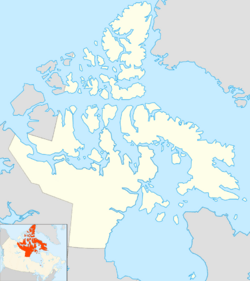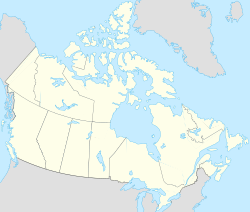Cox Island facts for kids
| Geography | |
|---|---|
| Location | Hudson Bay |
| Coordinates | 58°39′20″N 78°40′30″W / 58.65556°N 78.67500°W |
| Archipelago | Canadian Arctic Archipelago |
| Administration | |
| Territory | Nunavut |
| Region | Qikiqtaaluk |
| Demographics | |
| Population | Uninhabited |
Cox Island is a small, quiet island located in the huge Hudson Bay in northern Canada. It's part of Nunavut, which is Canada's largest and most northern territory. Even though it's very close to the coast of Quebec, about 2 kilometers away, it belongs to Nunavut's Qikiqtaaluk Region. This island is not home to any people, making it a wild and natural place.
Contents
Where is Cox Island?
Cox Island sits in the eastern part of Hudson Bay. This bay is a very large body of saltwater in northeastern Canada. It's so big that it's sometimes called an inland sea. The island is quite close to the western coast of Quebec's Ungava Peninsula. This peninsula is a large area of land that sticks out into the bay.
Even though Cox Island is near Quebec, it is officially part of Nunavut. Nunavut is a huge territory in Canada's far north. It was created in 1999, separating from the Northwest Territories. Most of the people living in Nunavut are Inuit, who are the Indigenous people of the Arctic.
The Qikiqtaaluk Region
Cox Island is specifically located in the Qikiqtaaluk Region of Nunavut. This region is the largest and most eastern of Nunavut's three administrative regions. It includes many islands and a large part of the mainland. The Qikiqtaaluk Region is known for its vast, untouched landscapes and its important role in Inuit culture and history.
Why is Cox Island Uninhabited?
Cox Island, like many islands in the Canadian Arctic, is uninhabited. This means no one lives there permanently. There are several reasons for this:
- Remote Location: The island is far from major towns and cities. Getting there can be difficult and expensive.
- Harsh Climate: The Arctic region has very cold winters and short, cool summers. The weather can be extreme, with strong winds and lots of snow and ice.
- Limited Resources: Small, remote islands often don't have easy access to fresh water, food, or building materials. This makes it hard for people to live there long-term.
Wildlife and Nature
Even though people don't live on Cox Island, it is still an important part of the natural environment. Islands in Hudson Bay can be home to various Arctic animals. These might include polar bears, seals, and many types of birds. The surrounding waters are also important for marine life.
Hudson Bay's Importance
Hudson Bay itself is a very important area. It plays a big role in the climate of North America. It is also a vital habitat for many animals, especially polar bears, seals, and beluga whales. The bay's waters freeze over in winter and melt in summer, creating a unique environment.
Arctic Geography
Cox Island is part of the larger Canadian Arctic Archipelago. This is a huge group of islands in northern Canada. These islands are mostly covered in tundra, which is a treeless plain where the ground is frozen for most of the year. The landscape is shaped by ice and cold, creating a unique and rugged beauty.



